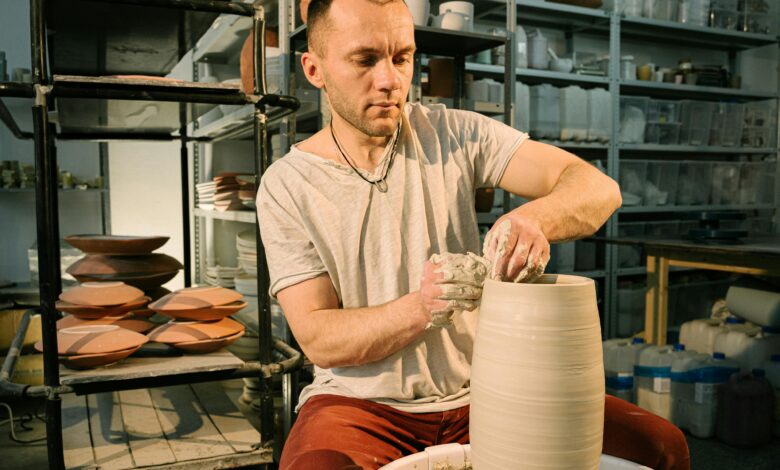Sodiceram: The Next Generation Ceramic Material Revolutionizing

Introduction to Sodiceram’s Breakthrough Potential
In the rapidly evolving world of advanced materials, Sodiceram has emerged as a revolutionary ceramic composite that is redefining performance standards across multiple industries. This innovative sodium-enhanced ceramic material combines the best properties of traditional ceramics with groundbreaking improvements in durability, thermal stability, and mechanical strength. Developed through years of materials science research, Sodiceram represents a significant leap forward from conventional alumina and zirconia ceramics, offering solutions to long-standing engineering challenges in aerospace, energy, medical, and industrial applications. What sets Sodiceram apart is its unique sodium-ion modified microstructure that provides self-healing capabilities at high temperatures while maintaining exceptional fracture toughness.
The Materials Science Behind Sodiceram’s Superior Performance
At the heart of Sodiceram’s exceptional properties lies a carefully engineered crystalline structure where sodium ions play a crucial role in enhancing material performance. The base composition combines high-purity aluminum oxide (Al₂O₃) with stabilized zirconium dioxide (ZrO₂), infused with precisely controlled amounts of sodium oxide (Na₂O) that modify the ceramic’s microstructure at the nanoscale level. Advanced electron microscopy reveals that the sodium ions occupy strategic positions within the crystal lattice, creating a unique self-reinforcing network that prevents crack propagation an extraordinary temperature range from -200°C to 1650°C. the sodium content to achieve this self-healing capability without compromising other critical properties, resulting in a ceramic composite that outperforms traditional materials in virtually every performance metric while offering new functionality previously unattainable in ceramic systems.
Precision Manufacturing Processes for Sodiceram Production
The manufacturing of Sodiceram requires specialized production techniques that have been refined through extensive research and development to ensure consistent quality and performance. The process begins with the selection of ultra-high purity precursor materials that undergo rigorous quality control checks before entering the production stream. Advanced powder processing techniques, including controlled precipitation and spray drying methods, create the ideal particle size distribution and morphology for optimal sintering behavior. The forming process utilizes both conventional dry pressing and innovative colloidal techniques depending on the component geometry and performance requirements, with binder systems specially formulated to accommodate the sodium-containing phases. Sintering represents the most critical and technically demanding stage, where precisely controlled temperature profiles in specialized kilns with carefully managed atmospheres.
Transformative Applications Across Key Industries
Sodiceram’s exceptional combination of properties has enabled breakthrough applications across multiple high-tech industries where conventional materials reach their performance limits. In the aerospace sector, Sodiceram serves as thermal protection systems for hypersonic vehicles and reusable spacecraft, where its ability to withstand extreme temperatures and thermal cycling provides unprecedented reliability. The energy industry employs Sodiceram in next-generation nuclear reactors as advanced fuel cladding and core structural components that resist radiation damage while maintaining integrity under accident conditions. Medical device manufacturers have adopted biocompatible grades of Sodiceram for load-bearing insulators and semiconductor processing equipment where its exceptional purity and electrical properties meet the most demanding specifications. Emerging applications include concentrated solar power systems, hydrogen production equipment, and advanced energy storage systems, each benefiting from Sodiceram’s unique combination of properties that no other single material can match.

Environmental Advantages and Sustainable Manufacturing
Beyond its technical performance, Sodiceram offers compelling environmental benefits that align with global sustainability initiatives and circular economy principles. The material’s extended service life dramatically reduces replacement frequency and associated resource consumption across all applications, with some components lasting decades in extreme operating conditions. Sodiceram’s composition avoids critical raw materials that face supply chain constraints or ethical sourcing concerns, instead utilizing abundant elements processed through environmentally responsible methods. The manufacturing process has been optimized for energy efficiency, incorporating waste heat recovery systems and advanced kiln technologies that reduce energy consumption by over 35% compared to conventional advanced ceramic production. while its thermal stability prevents emissions during high-temperature applications.
Frequently Asked Questions About Sodiceram Technology
1. How does Sodiceram achieve its self-healing properties?
The self-healing capability comes from carefully engineered sodium ion mobility within the ceramic matrix at elevated temperatures. When microcracks form, sodium ions migrate to fill the gaps and react with environmental components to form new ceramic material that seals the cracks.
2. What types of environments can Sodiceram withstand?
Sodiceram maintains performance in extreme conditions including high vacuum, corrosive chemical environments, intense radiation fields, and temperature extremes from cryogenic to 1650°C, making it suitable for space, nuclear, and chemical processing applications.
3. How does the cost compare to other advanced ceramics?
While raw material costs are moderately higher than conventional ceramics, the total cost of ownership is typically lower due to dramatically extended service life, reduced maintenance, and improved energy efficiency in operation.
4. Can Sodiceram be joined to other materials?
Yes, specialized techniques including active metal brazing and diffusion bonding allow reliable joining to metals and other ceramics, enabling hybrid components that combine Sodiceram’s properties with other material advantages.
5. What are the current limitations of Sodiceram technology?
Primary challenges include the need for specialized manufacturing equipment and the current production scale limitations for large components, though ongoing process improvements are rapidly addressing these constraints.
Conclusion: Sodiceram’s Role in Shaping the Future of Materials Engineering
As we stand at the forefront of a new era in materials science, Sodiceram represents a transformative development that bridges the gap between theoretical material potential and practical engineering solutions. This remarkable ceramic composite has already demonstrated its ability to solve previously intractable challenges across aerospace, energy, medical, and industrial sectors, while its full potential continues to unfold through ongoing research and application development. The unique combination of extreme durability, thermal stability, and self-healing capabilities positions Sodiceram as a material that can enable technological advancements not possible with conventional ceramics. As manufacturing processes scale and material formulations continue to evolve, we can anticipate Sodiceram playing an increasingly vital role in sustainable technology development, from clean energy systems to space exploration. sodiceram.